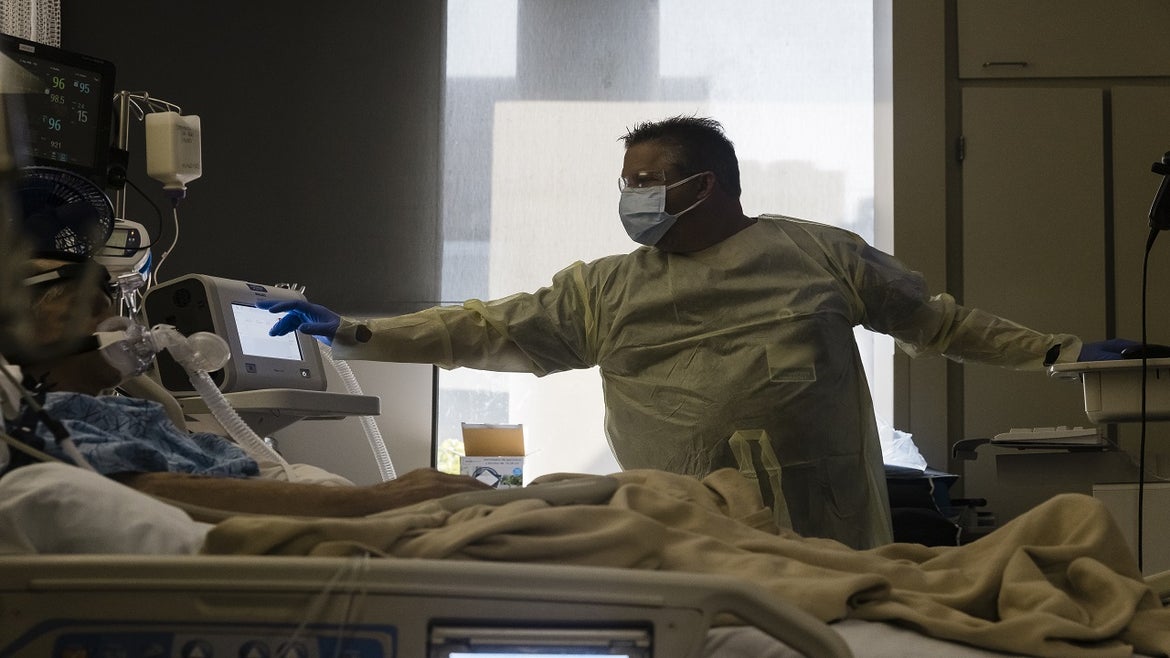A look back at how year one of the COVID-19 pandemic compares with the end of 2021.
As year two of life during a pandemic comes to a close, we pause to see how far we have come, and how far we have not, since life as we knew it ended in March 2020 when COVID-19 began its rage across the U.S.
A new set of unforeseen coronavirus problems emerged this year: the delta variant, the omicron variant, supply chain shortages and false vaccination claims, notably that women getting inoculated could become infertile.
The recent troubles seemed, to some, not as dire as the conditions we lived under in 2020: lockdowns, curfews, hospitals bursting at the seams with the dead and the dying and refrigerated trucks outside medical centers to house bodies that were taking up valuable space inside the stressed facilities.
Then, this winter, came the omicron variant, and the sobering news that 2021 COVID-19 deaths in the United States had surpassed last year's total. According to data from Johns Hopkins University, American deaths neared 800,000 for the entire pandemic. The 2020 number of coronavirus deaths was 385,343, according to the Centers for Disease Control and Prevention.
And also this holiday season, coronavirus fatigue was back in full force, as lines for coronavirus testing stretched for blocks, countries again began closing borders, or considering it, as cases increased not just among the unvaccinated, but the vaccinated as well.
A December Monmouth University Poll found a majority of Americans feel “worn out” by COVID-19 impacting their daily lives, and nearly half feel “angry” about it.
The survey also reported that support for facemask and vaccine mandates had declined since the fall, as the number of delta variant cases grew.
“The fact that Americans say they have had enough should be no surprise,” said Patrick Murray, director of the university's Polling Institute. “Every time we try to adjust to a new normal, another variant pops up to put us on guard again."
In short, the new normal is things are not normal. And aren't likely to be for ... who knows?
"There is just as much anxiety as there was a year ago. There's really no sign that the high levels of anxiety and depression are abating," Dr. Joshua Gordon, director of the National Institute of Mental Health, told Inside Edition Digital.
"It's harder on some than others," he noted. "Individuals who have lost loved ones are harder hit. People with fewer economic resources are harder hit."
For those in the latter group, gone this year are some of the financial lifesavers that helped families stay afloat — eviction moratoriums and supplemental unemployment insurance, for example.
"We can anticipate significant challenges for those without resources. Unemployment benefits are back to pre-pandemic levels, so that resource is gone," Gordon explained.
So how to deal with all the uncertainty, fatigue and just plain despair that such times bring?
"I wish I had data to tell you the answer," Gordon replied.
There is a lot to be said for simply surviving.
"Resilience is something you learn, you're not born with it," Gordon said.
"If you're a single mom, and you learned how to survive, and how to take care of your kids, you survived. And that is very powerful. You can look back and say, 'This pandemic has been terrible, and we're going to survive until it is over.'"
His advice for the coming year?
"Get vaccinated. Get boosted. Try to recognize that your emotional responses are just that. Emotional responses.
"Recognize that the experiences of the last two years have enabled you to build resilience. You made it through these two years," Gordon continued. "You can make it through whatever comes next."
Related Stories






